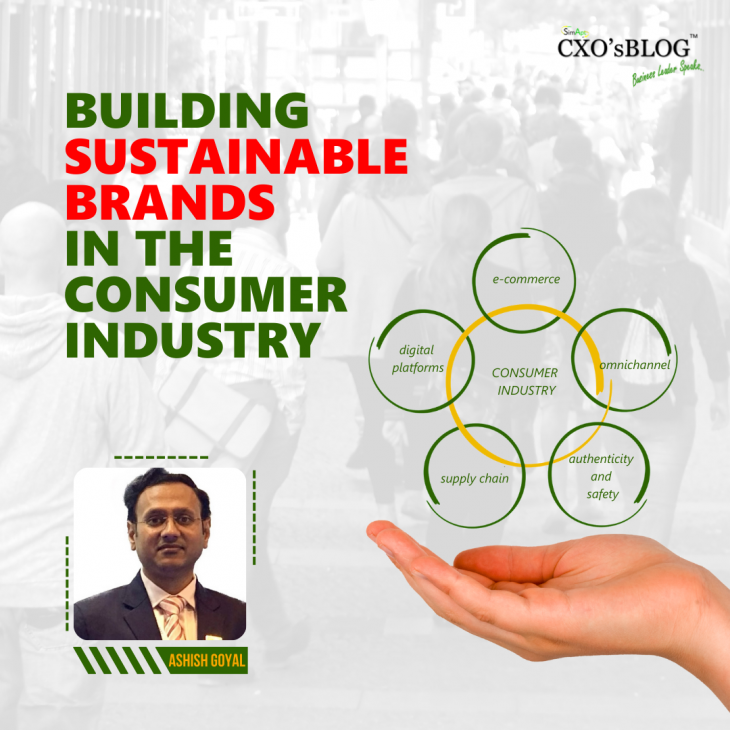Author: Ashish Goyal
In today’s dynamic consumer industry, building sustainable brands is not just a trend—it’s a necessity. As a versatile leader with over two decades of experience across automotive, appliances, interiors, and health foods, I’ve seen firsthand the transformative power of sustainable practices. Sustainable brands not only contribute positively to the environment and society but also achieve long-term success and loyalty in the marketplace.
The Core of Sustainability
Sustainable branding can help a business stand out from competitors, build trust with customers, and attract top talent. It also mitigates risks related to environmental regulations and corporate accountability, fostering loyalty among customers and stakeholders who want to be part of a conscious ecosystem. Sustainability in the consumer industry extends beyond environmental stewardship to include economic viability, social responsibility, and enduring innovation, aiming to create value for all stakeholders while minimizing negative impacts. Developing a strategic vision for sustainability, aligned with the company’s core values and business objectives, is crucial. This vision should commit to sustainable practices throughout the value chain, from sourcing raw materials to post-consumer use. For example, while leading the appliance business unit at Hafele India, I defined a three-year roadmap targeting a revenue of 500 crore INR with a 35% compound annual growth rate (CAGR) and a 41% gross margin, ensuring sustainability was embedded in the business’s growth trajectory.
Innovative Go-to-Market Models
Sustainable brands leverage innovative go-to-market models to turn visions into reality. This includes developing and launching products that meet high environmental and social standards. In my role at Old Turtle Health & Wellness, we successfully developed and launched a new herbal health food product in India and North America. This required aligning sales and production processes with sustainable practices and implementing omni-channel order-to-cash systems. Digital and technological innovations play a crucial role here. Integrating supply chain and customer relationship management (CRM) systems not only enhances efficiency but also ensures transparency and accountability, key elements of sustainability. Driving digital and tech innovations is critical in building sustainable brands. These innovations can streamline operations, reduce waste, and enhance customer experiences. At Hafele India, we drove various digital projects and direct-to-customer initiatives that brought operational efficiency and increased customer satisfaction.
Fostering a Culture of Continuous Improvement
A sustainable brand thrives on a culture of continuous improvement and customer centricity. High-performing teams are at the core of this culture. By fostering development and encouraging innovation, leaders can drive significant improvements in sales, margins, and market share. For example, during my tenure at Asahi India Glass Limited (AIS), I managed three business units, achieving a remarkable 25% growth and a 21% EBITDA. This was possible by empowering managers, establishing a growth mindset culture, and shifting from product selling to solution selling. Such a culture ensures that sustainability is not a one-time effort but a continuous journey.
Strategic Partnerships and Risk Mitigation
Building sustainable brands requires strategic partnerships and effective risk mitigation plans. Collaborating with vendors, suppliers, and other stakeholders ensures that sustainability is maintained throughout the supply chain. Successfully negotiating vendor contracts and creating risk mitigation plans were key achievements during my career, ensuring that all partners shared the commitment to sustainability. Finally, it’s essential to measure the success of sustainable initiatives. Clear performance metrics and KPIs aligned with sustainability goals help track progress and make necessary adjustments. For instance, in the interiors business at AIS, we achieved a 9% market share within two years of launch, highlighting the effectiveness of our sustainable strategies. Building sustainable brands in the consumer industry is a multifaceted endeavour that requires strategic vision, innovative go-to-market models, continuous improvement, digital innovation, strategic partnerships, and effective risk mitigation. As leaders, it’s our responsibility to drive these initiatives, ensuring that our brands not only succeed in the market but also contribute positively to the environment and society. By embracing sustainability, we can create brands that stand the test of time, delivering value to all stakeholders and paving the way for a brighter, more sustainable future.
